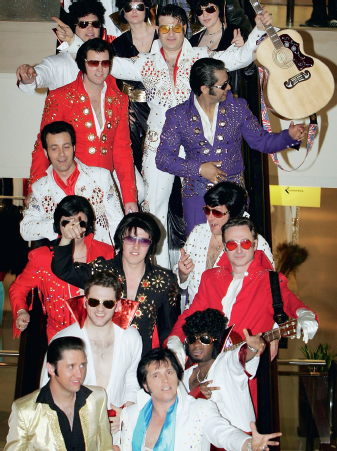Generating Ideas
For more on each strategy for generating ideas in this section or for additional strategies, see Ch. 19.
Although setting down observations might seem cut-and-dried, to many writers it is true discovery. Here are some ways to generate such observations.
Brainstorm. First, you need to find a scene to observe. What places interest you? Which are memorable? Start brainstorming — listing rapidly any ideas that come to mind. Here are a few questions to help you start your list:
DISCOVERY CHECKLIST
- Where do people gather for some event or performance (a stadium, a church, a theater, an auditorium)?
- Where do people meet for some activity (a gym, a classroom)?
- Where do crowds form while people are getting things or services (a shopping mall, a dining hall or student union, a dentist’s waiting room)?
- Where do people pause on their way to yet another destination (a light-rail station, a bus or subway station, an airport, a restaurant on the toll road)?
- Where do people go for recreation or relaxation (an arcade, a ballpark)?
- Where do people gather (a fire, a party, a wedding, a graduation, an audition)?
Get Out and Look. If nothing on your list strikes you as compelling, plunge into the world to see what you see. Visit a city street or country hillside, a campus building or practice field, a contest, a lively scene — a mall, an airport, a fast-food restaurant, a student hangout — or a scene with only a few people sunbathing, walking dogs, or tossing Frisbees. Observe for a while, and then mix and move to gain different views.
Record Your Observations. Alea Eyre’s essay “Stockholm” began with some notes about her vivid memories of her trip. She was able to mine those memories for details to bring her subject to life.
Your notes on a subject — or tentative subject — can be taken in any order or methodically. To draw up an “observation sheet,” fold a sheet of paper in half lengthwise. Label the left column “Objective,” and impartially list what you see, like a zoologist looking at a new species of moth. Label the right column “Subjective,” and list your thoughts and feelings about what you observe. The quality of your paper will depend in large part on the truthfulness and accuracy of your observations. Your objective notes will trigger more subjective ones.

| Objective | Subjective |
| The ticket holders form a line on the weathered sidewalk outside the old brick hall, standing two or three deep all the way down the block. | This place has seen concerts of all kinds — you can feel the history as you wait, as if the hall protects the crowds and the music. |
| Groups of friends talk, a few couples hug, and some guys burst out in staccato laughter as they joke. | The crowd seems relaxed and friendly, all waiting to hear their favorite group. |
| Everyone shuffles forward when the doors open, looking around at the crowd and edging toward the entrance. | The excitement and energy grow with the wait, but it’s the concert ritual — the prelude to a perfect night. |
Include a Range of Images. Have you captured not just sights but sounds, textures, odors? Have you observed from several vantage points or on several occasions to deepen your impressions? Have you added sketches or doodles to your notes, perhaps drawing the features or shape of the place? Can you begin writing as you continue to observe? Have you noticed how other writers use images, evoking sensory experience, to record what they sense? In the memoir Northern Farm (New York: Rinehart, 1948), naturalist Henry Beston describes a remarkable sound: “the voice of ice,” the midwinter sound of a whole frozen pond settling and expanding in its bed.
Sometimes there was a sort of hollow oboe sound, and sometimes a groan with a delicate undertone of thunder. … Just as I turned to go, there came from below one curious and sinister crack which ran off into a sound like the whine of a giant whip of steel lashed through the moonlit air.